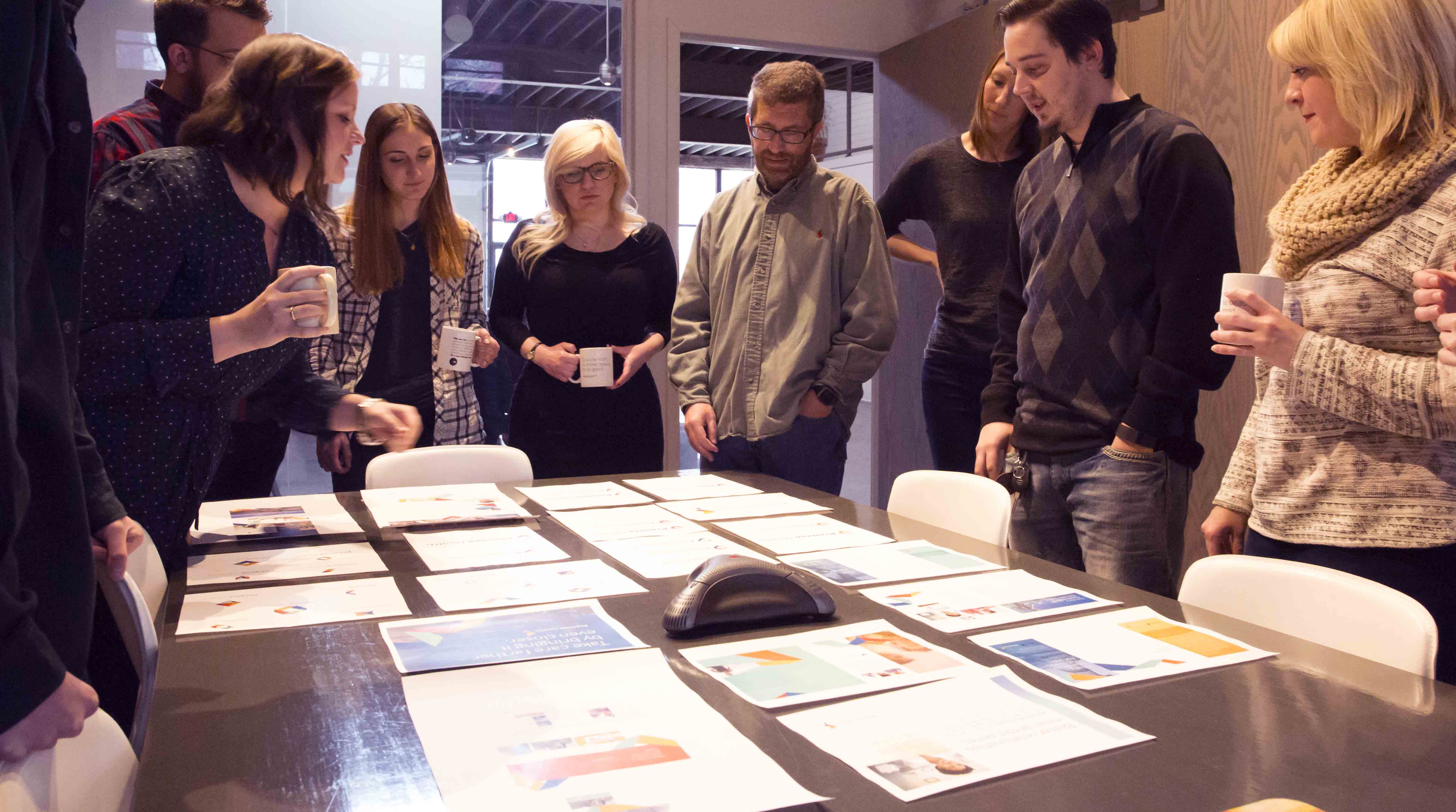Pushing and Pulling in Design
I was presenting a web design concept to a client the other day, and was trying to explain why 90% of the layout looked a certain way, while the rest was totally different.
My answer was that the brain loves logic and is always looking for patterns. Once the brain recognizes the pattern, it will anticipate what comes next. That makes everything a little less exciting. To keep things interesting in our designs, we try to break up the rhythm a bit.
Patterns, rhythm and familiarity have a place in design, of course, but they don’t always make for the most exciting websites. On the other hand, design without structure and order can be beautiful but completely impractical.
Ah, graphic design.
One of my favorite books on design is I Am Almost Always Hungry by Cahan & Associates. Bill Cahan, the principal and creative director of the firm, sums it up best when he says that his primary role at the company is “to add tension.”
I absolutely love this line. “Adding tension” makes everything more interesting. But creating the right amount of tension is a delicate balance that designers face everyday. If the elements of design are a balance between order and chaos, pulling too hard either way is a recipe for failure. But not pulling at all will only result in unremarkable work.
I recognize patterns throughout my day, and I’ve noticed this tension theme not only in the visual outcomes of our designs, but in the everyday process of design itself.
Practical and Impractical
There’s tension in how designers strategically approach projects. If a design concept for a client isn’t different enough to stand out in its category, it’s a failure. If it’s so different that people don’t know what category the product belongs to, it’s also a failure.
Famed design icon Paul Rand said that most design students’ work is bad not because it isn’t original, but because it isn’t practical. Rand said, “the trick is to be practical, at the same time you’re being impractical.”
Where Ideas Come From
Every day we struggle to determine where ideas for projects should come from. Is it the writer’s job to come up with the idea? Is it the designer’s? Maybe it’s the creative director’s, or the strategist’s? For efficiency’s sake, maybe one role should be designated as the generator of great ideas. That would work if the process was a linear handoff with clearly defined start and end points. Most days the process of idea generation is far from linear, and the whole team has to push and pull back and forth to create something amazing.
Racing the Clock
Our project management team, which is extremely organized, is hit every day with changing timelines, rush requests from clients and a creative director who always wants to scrap everything and start over. (Sorry, Christen, you’re the best). It’s a balance between meeting hard deadlines and making the best work possible in the time we’re given. There’s tension in knowing that you might be on to a better way to solve the problem, even though you’re out of time.
The reoccurring theme throughout my days, my detectable pattern, is order vs. chaos. Both sides need a little of each other to make work (and life) meaningful and impactful. Bill Cahan is on to something: tension keeps things interesting. It breaks the established rhythm just enough to keep us looking forward to what’s coming next. It makes all of the elements work better together.
Stay up to date on the latest marketing insights from Atomicdust.
Sign up for our newsletter and we’ll send you weekly marketing tips from our team, as well as the latest news and events from Atomicdust.


